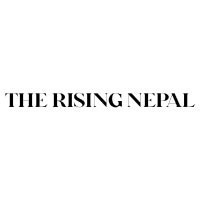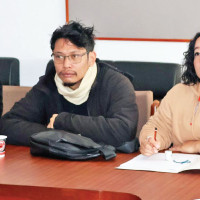- Wednesday, 7 January 2026
Political Communication Vital For Governance
Modern communication marks a shift from an informal one to a fusion of the print, sound, picture and digital platform. But its eternal goal of upholding public interests remains unchanged. Digital platforms, cybernetics and artificial intelligence have given big impetus to the communication revolution. It has opened the human mind to a new landscape overlapping all knowledge precincts and coordinating the conduct of individuals, institutions and nations. These tools offer a glimpse of the future society. But in no way are they tuned to human feeling, conscience and morality. The linear leader-oriented communication gears toward horizontal multi-sided dispersal of political messages. It has spurred a shift in politics from ideology to networks, the economy from real to symbolic one and society from simple to complex.
Now, each individual with a mobile phone can self-represent, transmit messages to a variety of circles and scales and pass judgment about public affairs. As the capillary vein of modernity, they offer every person a choice to get wider attention and solve problems. The old style communication from the central committee of parties to local units for socialisation, mobilisation, discipline and control has shifted to a two-way flow. The bottom-up feedback is deemed a regulator of the polity. The effect of social media on the life of Nepalis is obvious in their sovereign choice. But the agility of social media in Nepal entails certain civility.
Plural flow of information
Autonomous and plural flow of information, news, views and analysis is crucial to represent the diversity and asymmetry of Nepali society. Ironically, most of the Nepali media is dominated by business, political parties and geopolitical interests. Their amphibious roles blur the value complex between their professional public functions and private instinct for profits. They are also lured by fan affinity and global fads, thus habitually cleaving the nation’s political culture. As a result, they seem weak in articulating the priorities of Nepalis in the public sphere, capable of boosting a robust polity.
Autonomous media often collide with the exigency of these slants oriented to thought-control and manipulation of consciousness seeking coherence in worldview, political discipline, socialisation, mobilisation and collective action. This skews popular feedback and dulls people’s critical sense of inquiry about the state of the nation. As a result, articulation of strident voices is louder in the streets. Stirs of teachers, cooperatives, medicos, farmers, victims of loan swindlers, etc. show not the delight, but the effect of the light weight of public opinion on crisis management.
Autonomous Nepali media communicate their demands to the political sphere and elicit response from political authorities — parties, legislatures and bureaucracies, while the official channels have to resolve the dilemma between conformist tip and critical information flow.
Bridging communication gap: A robust Nepali polity entails free flow of information on public issues to shape public opinion, political will and even rationalisation of society and the polity so that absurdity of politics arising out of coercion, prejudice, fraud and nepotism is slashed. This is central to bridging the communication gap between the Nepalis and their state. The edifice of a national culture capable of social and national integration is the duty of the cultural industry, of which the media is a vital part. But its monopoly by dominant interest groups has created a split between owners’ profit interest by feudalising the public sphere and people’s concern about the public good.
It disrupts the input and output functions of Nepali polity, thus creating entropy. Unfair regulations of media can be inapt at a time when political awareness of Nepalis has matured and they often invoke the constitutional right to information act, an act which has helped to expose grand corruption, scams, land grab, misuse of authority, etc. But distortion of information requires certain control without undermining the ability of the media to produce truth and articulate public interests to power.
Rule-based freedom: Freedom of communication is law-based, not lawless. But disorderly channels of communication in the political process mark a rot, not the development of a robust polity capable of steering governance in the institutional and constitutional direction. Nepali media are reporting multiple political impulses and stimuli of the public. The first is an atavistic one. It is seeking a system change. Reformists demand the amendment of the constitution but are unclear about the contents. The radicals desire to restructure the polity.
Nihilistic and postmodern voices speak of withering away the Nepali state, while others indulge in lawless social engineering to decompose all the elements of national unity and ride the ridge of power. Conflicting media socialisation in Nepal continues to stoke irredentist propensity and threatens the ability of the polity to stabilise its authority and legitimacy in Nepali society. There is hardly any informed debate on how to construct a mutually accepted rational order of constitutional rule that can promote rule-based freedom and rectify the evils vitiating the responsive units of the polity.
Integration of public sphere: Political communication dominated by multiple impulses in Nepal has created mini sub-cultures, thus deflating the national communicative space so vital to spur national solidarity. Likewise, the clustering of media associations, federations and unions along partisan lines has fragmented the political sphere into sub-publics lacking the fusion of their horizons into a national gaze.
So does the flow of information and political messages to convert passive Nepalis into active citizens with enough civic competence to influence policy and decision-making. Cultivating the civic virtues of Nepali people and leaders is the vital function of the media to create common ground for the mitigation of social conflicts and frame a shared vision of a stable future.
Informed public policy debate: Political communication is an artery of society’s overall functions, from everyday understanding of people to the signals of the market, barometers of trust in governance and network diplomacy. The rational public is well informed about the public policies germane to national progress. Lively debate can educate all Nepalis about their rights and duties. Autonomy of Nepali media from the interest groups is thus vital to make policies serve the public.
In a diverse society like Nepal with varied interests, the richness of media is central to making them stakeholders of the polity and increasing the efficacy of political institutions. The growing use of social media has erased the division between the urban nodes and the rural periphery, thus bringing the local to the center of national debate. Famine in Humla-Jumla, effects of floods and earthquakes, pandemics, domestic violence, etc., have caught the attention of the media, evoking the response of authorities.
Spiraling up cognitive dimension: Democratic awareness arising out of manifest communication has liberated people from their non-political private sphere. The networks of official communication provide messages about the government’s programmes, policies, laws and activities, while the attentive public, critical media and opposition parties put a critique on them as to whether they are beneficial to the general mass or only elites. The diversity of political communications has detonated jarring messages difficult for the people to shape choices based on media-mediated knowledge and critically pass judgments on the performance of the public, private and civil society institutions.
One finds a deep hiatus between the shapers and consumers of public opinion. Still, daily politicisation of Nepalis by social media has improved their cognitive dimension and inflamed the public's emotions about the negative state of affairs. In this sense, the judgmental ability of Nepalis is critical as to which information is objective and which is loaded with biases. Even the bulk of the media has opened a chasm between norms and facts of national life and demands that society change in tune with ecological and technological directions.
Lack of a critical view
Self-critical orientation: One flaw of the agencies of political communication in Nepal is the lack of a critical view of self as a way to open reforms and disperse information to the public in a sensitive way. Media studies have pointed to the need for training journalists on new technologies and the humane projection of the interests of diverse Nepalis, including the voice of the oppressed. Among the illiterate people of rural areas, the fairness of radio and television can be more useful than print. The access to mobile phones has become common in Nepal, which has served as a source of news, views, commentaries and self-projection to a bigger audience.
Has it helped the users be self-accountable for their views and transparent in shaping public affairs? Eternal political transition in the nation has produced value flux and become a ruse to remain silent, not articulate. The time has come to improve the communication pattern in Nepali polity to enable it to reconcile national spirit, people’s rights, norms of social contract and adaptive change as per Nepalis aspirations.
(Former Reader at the Department of Political Science, TU, Dahal writes on political and social issues.)















